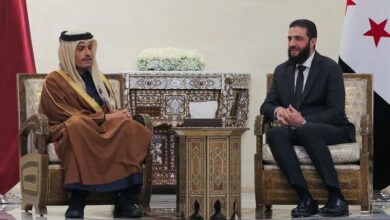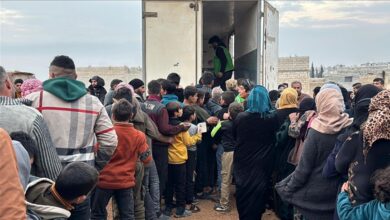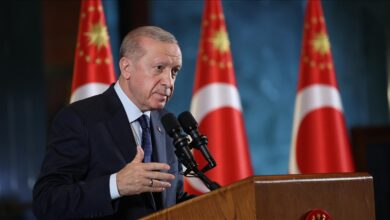
“Sheltering the displaced” is one of the most important humanitarian projects in northern Syria
Many humanitarian organizations in northern Syria are working on community projects, with the aim of transferring the residents of informal settlements to brick shelters as a sustainable solution that alleviates their suffering.
In a poll conducted by Radio Fresh correspondents, the people said: “Humanitarian organizations are working hard to secure decent housing for the displaced by moving them from tents made of cloth to brick homes, but the organizations’ work remains limited, as these projects need very large support, and in order to develop this work, good international support is needed for the organizations to shelter all the displaced.
They added: “The displaced suffer many difficulties in the camps, as the camps do not protect them from the heat of summer or winter, but in return, organizations work to build houses either of brick or regular homes and equip them with all their requirements, which makes organizations need a long period of time to finish such projects, and there are difficulties in securing adequate support to accommodate a large number of displaced people.
In an exclusive interview with Fresh Online, Professor Hassan Aksoy of IHH in the northern countryside of Aleppo says: “IHH is a Turkish organization that has been established for more than 30 years.It operates in more than 120 countries its main business is the delivery of relief materials and humanitarian aid to areas that suffer from a narrow economic situation in some countries, and their activities were concentrated in Syria in a large way with the start of the Syrian revolution.
Aksoy added: “The beginning of the organization’s work in Syria was limited to sheltering displaced people from neighboring areas in the country, who fled from the oppression and criminality of the Assad regime, and the organization provided housing for them and supported them with the necessary relief materials, and the organization’s work continues until now in the liberated areas north of Syria, including: Idlib, Afrin, the northern countryside of Aleppo, Tal Abyad and the rest of the liberated areas, and it also targets many humanitarian issues, such as health and education.
He confirmed that the displaced people who live in the liberated areas are mostly in the Idlib region near the border strip to Turkey, and the areas of Azaz and Jarablus, where about one and a half million civilians live in the displacement camps in various regions in Idlib and elsewhere, and the number of residents in the northern regions of Syria is more than five million 35% of them live in informal settlements.
Regarding the organization’s role in building and securing alternative housing for tents, he points out that “the organization is working on building complexes containing brick homes and other caravans to transport the displaced families who live in tents to them to secure a better life for them.”
He noted that the organization is active in these housing projects in Idlib governorate, due to the large number of arrivals to it, including displaced and as a result of military actions, and work is currently underway in more than 40 areas of Idlib Governorate and Aleppo countryside to build and equip brick camps to be handed over to the displaced.
Regarding the criteria followed by the organization in handing over homes, he says: “The priority in handing over homes within the new settlements is for the displaced within the informal settlements who do not have any real estate or property in the place of their displacement, followed by families who have people with special needs in addition to widows.”
As for the standards used in building brick houses, he indicates that each “residential community that is prepared differs from the other due to the presence of several support agencies for these projects and each support party chooses its project independently of the other, and several local organizations and associations participate with the Humanitarian Relief Foundation.”
Each residential complex to be completed and equipped by the Humanitarian Relief Foundation contains service facilities that include a mosque, a school, a clinic, and a garden.
The organization faces many difficulties during the implementation of residential community projects, including converting some camps into gatherings. The difficulty is made possible by the presence of large numbers of displaced people. The organization cannot secure housing for all residents at the beginning of the project implementation.
Humanitarian organizations in northern Syria seek to alleviate the worsening human suffering of hundreds of thousands of displaced people by providing concrete shelters instead of fabric tents as a sustainable solution that ends the suffering of many years.
Prepared by: The Website Editor Hamza Al-amour




